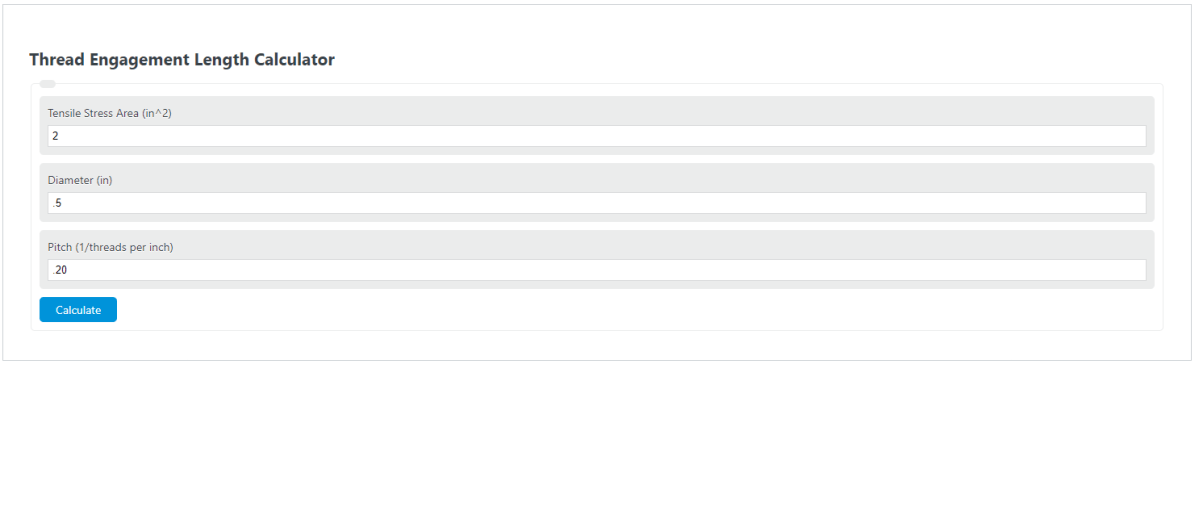Enter the tensile stress area, major diameter of the screw, and pitch into the calculator to determine the minimum thread engagement length.
Thread Engagement Length Formula
The following equation is used to calculate the minimum Thread Engagement Length.
Le = 2*At / ( .5*pi*(D-.64952*p))
- Where Le is the minimum thread engagement length (in)
- At is the tensile stress area (in^2)
- D is the diameter of the screw (in)
- p is the thread pitch = 1/number of threads per inch
The units of measure for the minimum thread engagement length will be the same as the diameter.
What is a Thread Engagement Length?
Definition:
A thread engagement length is considered the minimum viable length of thread that needs to be in contact with the opposite thread wall to handle a certain amount of stress.
How to Calculate Thread Engagement Length?
Example Problem:
The following example outlines the steps and information needed to calculate the Thread Engagement Length.
First, determine the tensile stress area. In this example, the tensile stress area is found to be 2 in^2.
Next, determine the diameter of the screw. This is measured to be .5 inches.
Next, determine the pitch of the screw. This is equal to the inverse of the threads per inch. In this case, the threads per inch is 5, so the pitch is 1/5.
Finally, calculate the minimum thread engagement length using the formula above:
Le = 2*At / ( .5*pi*(D-.64952*p))
Le = 2*2 / ( .5*3.14159*(.5-.64952*(1/5)))
Le = 6.88 in
FAQ
What factors can affect the minimum thread engagement length required for a screw?
The minimum thread engagement length can be influenced by several factors including the material strength of both the screw and the tapped hole, the type of stresses (tensile, shear) applied to the joint, the presence of any lubrication, and the operational environment (temperature, corrosion, vibration). Understanding these factors is crucial for ensuring the reliability and safety of the assembled joint.
How does the pitch of a screw affect its thread engagement?
The pitch of a screw, which is the distance between adjacent threads, plays a significant role in determining the thread engagement. A finer pitch (more threads per inch) generally allows for better distribution of load across the threads, potentially leading to a stronger joint for a given diameter. However, it may also require more precise manufacturing and can be more susceptible to galling or seizing in certain materials.
Can the thread engagement length be too long?
While having sufficient thread engagement is crucial for a secure fastening, excessively long thread engagement does not necessarily translate to a proportionally stronger joint. Beyond a certain point, additional thread engagement length contributes diminishing returns in terms of added strength and may unnecessarily complicate the design or assembly process. It is important to calculate the optimal engagement length to balance strength, material usage, and manufacturing efficiency.
